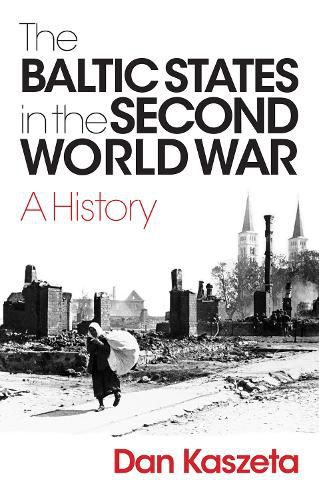Readings Newsletter
Become a Readings Member to make your shopping experience even easier.
Sign in or sign up for free!
You’re not far away from qualifying for FREE standard shipping within Australia
You’ve qualified for FREE standard shipping within Australia
The cart is loading…






This new history reveals that the Baltic States were as fiercely contested between the Germans and Russians as any flashpoint of the Second World War.
Comparing a map of Europe from 1936 with one from 1946, all the countries are there, albeit with some shifts in borders, except for three: Estonia, Latvia and Lithuania. These states disappeared during the Second World War, despite never declaring war or having war declared on them.
This book describes the theft of the Baltic states. Despite hoping to ride out the war in neutrality, like Sweden, the three countries suffered a triple occupation. A nasty and brutish, but short, Soviet occupation was displaced by a three-year Nazi occupation that was nasty and brutish in different ways. A barbarous genocide of Jews and Roma ensued. The Soviets returned in 1944 and did not leave for decades, calling into question exactly when the war really ended for the Baltic states.
All three occupations used local collaborators and achieved some degree of cooperation, but there was also a wide variety of resistance. Thousands of Baltic people fought for the Soviet Union; thousands more fought for the Nazi occupiers. The majority were conscripts or had joined under duress, but there were some willing Quislings. Kaszeta offers the reader a sober and nuanced exploration of the under-reported 193945 period in the Baltic states.
$9.00 standard shipping within Australia
FREE standard shipping within Australia for orders over $100.00
Express & International shipping calculated at checkout
This new history reveals that the Baltic States were as fiercely contested between the Germans and Russians as any flashpoint of the Second World War.
Comparing a map of Europe from 1936 with one from 1946, all the countries are there, albeit with some shifts in borders, except for three: Estonia, Latvia and Lithuania. These states disappeared during the Second World War, despite never declaring war or having war declared on them.
This book describes the theft of the Baltic states. Despite hoping to ride out the war in neutrality, like Sweden, the three countries suffered a triple occupation. A nasty and brutish, but short, Soviet occupation was displaced by a three-year Nazi occupation that was nasty and brutish in different ways. A barbarous genocide of Jews and Roma ensued. The Soviets returned in 1944 and did not leave for decades, calling into question exactly when the war really ended for the Baltic states.
All three occupations used local collaborators and achieved some degree of cooperation, but there was also a wide variety of resistance. Thousands of Baltic people fought for the Soviet Union; thousands more fought for the Nazi occupiers. The majority were conscripts or had joined under duress, but there were some willing Quislings. Kaszeta offers the reader a sober and nuanced exploration of the under-reported 193945 period in the Baltic states.